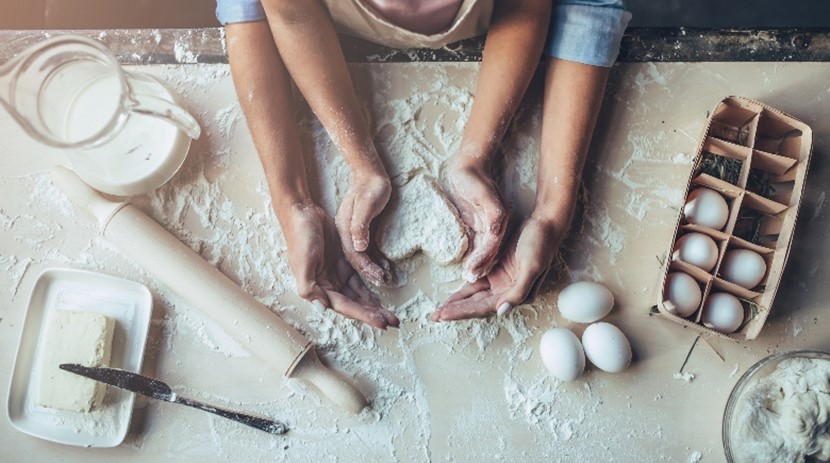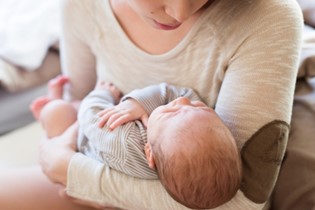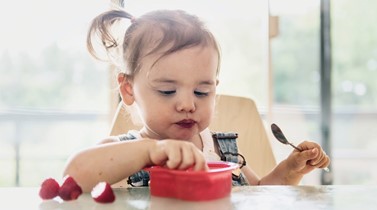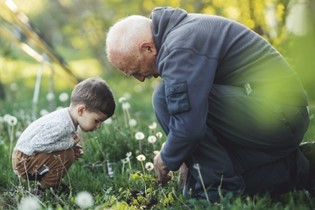Revamp your pantry, we show you how

Transform a chaotic pantry into one that’s clean and clutter-free with this step-by-step guide from organisational coach Rachel King.
When people think pantry storage and organisation, often the first thing they want to do is rush out and buy the latest shiny new storage organisation system. With the myriad of options out there these days, it’s easy to think that a set of beautiful jars and baskets will solve all your pantry woes. Don’t fall into that trap! You’ll end up with baskets, boxes and containers that don’t suit the space and the food you’re working with, compounded with guilt and frustration that you’ve just spent a lot of money and didn’t solve anything. There’s a process to a well-organised pantry (or any other space), and if you follow it systematically from start to finish, you’ll be able to create an efficient, functional space that works for you.
This isn’t a quick fix; it takes time. If you only have short pockets of time (like when baby’s sleeping or the kids are in school or childcare), you may need to do this in phases and explain to other household members that the kitchen might appear a bit chaotic while you go through this process, but that the end result will be well worth it.
Task 1: Declutter
When creating any great storage system, especially in your pantry, decluttering always comes first. There are many reasons that your household food requirements change; from a new baby on the scene, to kids growing up and changing food preferences and tastes, to improving your diet and making healthier food purchases. These changing food needs mean that there will be things lurking in your pantry that no longer serve a purpose. If you don’t reduce the volume of items in your pantry down to those that you actually use and need, you’ll end up finding yourself right back where you started before too long.
This stage can feel a bit chaotic and messy, so ideally do this when you have a window of a couple of hours available, or when there is someone on hand to watch the kids.
☙ Take everything off the shelves. This step is key. It seems like a big deal, but if you really want to start with a clean slate, do things properly, and get a good feel for the space available, you’ve got to start here. By clearing everything off the shelves, you can take stock of how big your pantry actually is and what you really have room for. You’ll also only discover those unused or expired items hiding in the back corners when you do a full clear out. If there’s any food stored in another cupboard in your kitchen, take that out too.
☙ Cleaning time. Now that your pantry is empty, it’s time to wipe down those shelves, which may not have seen the light of day for years.
☙ Now discard. Bin anything that has expired, plus anything that you don’t use. If you’re not currently using it, don’t save it for a rainy day. It’s adding to your clutter and making finding things that much more difficult. Maybe you were cooking loads of spicy curries, and have a pantry full of spices that you no longer use. Accept the season of life that you’re in (puns and all), and decide to get rid of those spices for now. When your kids grow up there will be a time for spicy foods again, but by then you’ll want fresh spices, not spices that have sat in their packets for five years!
Some people find this stage easy, others harder. The number one excuse I hear from people when I’m helping declutter anything is “I might use this one day”. But generally, 99% of the things you save ‘just in case’ won’t end up being useful. So, if you can embrace the concept of only keeping what currently serves you, you’ll end up with a far more efficient pantry that better suits your family’s needs.
Task 2: Categorise what’s left
Now that you’ve cleared out the pantry, and kept only those things that are truly useful to you, it’s time to create order out of what’s left. Before putting things back, you need an idea of how much of each food category you’ve got.
Here are some category suggestions for grouping your items. You’ll have varying amounts within each category, depending what types of food you eat and how big your pantry is. This is simply a guide to get you started:
☙ Grains, rice, beans, pulses, pasta
☙ Baking supplies
☙ Herbs and spices
☙ Nuts and seeds
☙ Tinned food
☙ Breakfast foods
☙ Bread
☙ Tea and coffee
☙ Alcohol and other drinks
☙ Baby food
☙ Snack food
☙ Vitamins and supplements
☙ Root vegetables, onions, garlic
Task 3: Choosing storage containers
If you’ve made it this far, now is finally the time to invest in some beautiful jars, baskets or other storage containers to bring it all together. But before you do, take stock of what you already have for storage items and use what you can. Now that you’ve removed all the clutter, you may discover you have all the containers you need.
If you are going to invest in new containers, here are some tips for deciding what to buy:
☙ Check your food categories and make a list of all the containers you think you’ll need. Buy a couple of extra containers, so that you have them on hand for any extra foods you don’t currently have in stock.
☙ Before heading to the shops, measure your shelf height and depth, to make sure the containers will fit the space available.
☙ Go for good quality airtight containers for flours, nuts, seeds and the like, otherwise weevils can get in.
☙ Glass jars with airtight seals are a great option – they look good and make it easy to identify what’s inside.
☙ Choose a classic style or range that does not change each season, then you can always add to your collection over time. Tupperware for plastic and Weck for glass are two excellent choices.
☙ A set of labels is a handy way to visually tie your storage system together, and ensure other household members know what goes where too. Blackboard labels with a white chalk pen look great – these can be found at stationery shops and dollar stores.
☙ If space is tight, go for square or rectangular stackable containers – they’re the most efficient use of space.
☙ Buy baskets for foods that don’t tend to stand up well on their own, eg baby food pouches, seasoning sachets, soup mixes and prepackaged snacks. Have one basket for each food category to keep foods well organised and easy to access.

Task 4: Organise Your Shelves
The final step in the process is putting everything back. If you’ve done the hard yards, this step won’t be too difficult. But don’t rush it; if you make careful decisions now, your pantry will be efficient and organised in a way that best serves you and your family’s needs.
First up, consider how much you tend to use the foods in each category. If you do a lot of baking, you’re not going to want those supplies out of reach on the top shelf. If you make all your own baby food from scratch (kudos if you do!), you will need plenty of space to store your fruits and veges for pureeing. If you do lots of cooking with spices, make sure your spices don’t end up stashed in the back corner of your cupboard.
Your pantry needs to serve you, not be modelled off an idealistic version you’ve seen in a catalogue that is neither achievable nor practical. With that in mind, here are some general tips for what to put where, and how best to store things.
☙ The simplest rule of thumb is to put your most frequently used items at eye level or within easy reach.
☙ Store healthy kids’ snacks on a low shelf so they can help themselves. If you have young children, however, snacks may need to go up high until they’re old enough to be trusted.
☙ Keep treats up high in a special tin that sits on the top shelf of your pantry and only comes down on special occasions.
☙ If your pantry is tight for space, storing beans, pulses, rice and other grains on other open shelving in the kitchen looks great and makes them easily accessible.
☙ Store breakfast spreads on a tray so you can pull the whole thing out at breakfast time.
☙ Group cans together in rows. For example, you might have a row of tinned beans and pulses, a row of tinned fruit, and a row of tinned vegetables. If you buy tinned foods in bulk, store extra supplies at the back of your pantry.
☙ Don’t be tempted to fill every shelf just because it’s there. If you find yourself with more space than you need, leave it empty for now. You will undoubtedly find a use for it in the not-too-distant future and will be glad you kept the space available.
You may need to tweak and rearrange things over the next few days until the location of foods works for you and makes sense for your family’s needs. But if you’ve made it to here, it’s time to celebrate! Pour yourself a glass of wine and congratulate yourself on a job
well done.
|
Rachel King is a mother of three with a passion for editing and simplifying. She presents productivity seminars and decluttering workshops, and also works one-on-one as an organisational coach. For more tips and tricks on living a simpler, more organised life, head to lifeedit.co.nz. |

AS FEATURED IN ISSUE 42 OF OHbaby! MAGAZINE. CHECK OUT OTHER ARTICLES IN THIS ISSUE BELOW

















